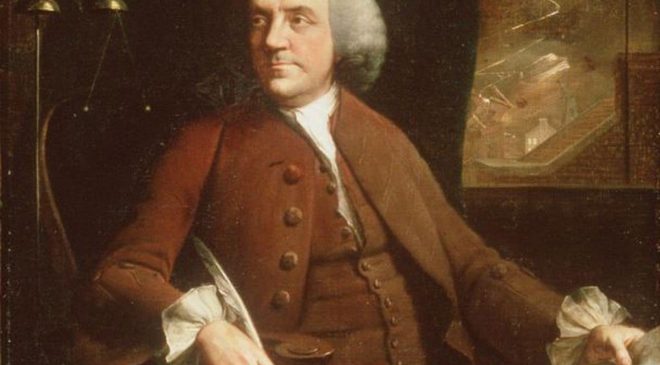The government’s K-12 schools–aka “public schools”–are once again a battleground on which a bitter dispute is playing out. Wait!–once again? The government’s schools have been a battleground since their inception in the 19th century. Since that’s where the children are, how could it have been otherwise? For an institution that was supposed to produce social unity, it’s done the exact opposite.
Today’s battle is over Critical Race Theory (CRT), which in one form or another is being pushed by a lobby that has a stake in having us believe that all of American history, up to the present, can be summed up in one phrase: racist oppression. Or as Nikole Hannah-Jones of the New York Times 1619 Project puts it, white supremacy “runs in the very DNA of this country.” For my purpose today, though, I have no need to weigh in on the merits or lack thereof of CRT. All we need to know is that it is a polarizing issue: some people very much want it to shape the K-12 curriculum, while others just as vigorously oppose it. Each side thinks that the future of America depends on its success. A couple of dozen red states have banned it from their schools, which in turn has set off a debate over whether the government should ban any ideas. The (classical) liberal tradition prizes free inquiry and free speech, so the thought of banning the teaching of a doctrine is abhorrent. But that’s far from the end of this story.
What I want to emphasize is that CRT joins a long list of causes that were fought over in the public-school arena. They include prayer, evolution, sex education, math and reading teaching methods, creation science, and Western civilization. The history of the government’s schools is a history of conflict, for the obvious reason I will discuss in a moment. The way to reduce such conflict is not to ban or promote particular ideas, but rather to stop the government from imposing ideas on unwilling people–or their children. The problem is not CRT or any other idea; it’s government control of schooling.
Let’s start by noting that the original purpose of government schooling, as I explained in Separating School and State: How to Liberate America’s Families, was to promote unity by tamping down diversity. Few people today would believe this because diversity is supposedly what all enlightened people favor. (In fact, only superficial diversity is favored. Intellectual diversity is at least discouraged.) But back in the 19th century the founders of the “common school” movement feared that diversity, especially but not only religious diversity, would tear the young country apart. So the first government schools were designed to be a force for homogenization; they were to instill a nondenominational Protestantism in children in order to create a unified nation of model citizens. They would also dilute the influence of their gluttonous and slothful parents. When Jews and Catholics voiced their objections to the religious nature of the instruction, they were told shut up. So the dissenters set up their own schools.
As I say, conflict with respect to the schools is nothing new. It would have been amazing had this not been the case. It is in the very nature of government planners to expect that one size will fit all. If their plan doesn’t fit all naturally, they’ll make it fit, much like Procrustes. If it still does fit, they’ll blame the unenlightened subjects.
But in no way can one plan be right for everyone. This is particularly true in the education of children. Yet government-run schools are ill-suited to tailoring services to the varying requirements of children. They may try, but the results will be upsetting. One result will be conflict between groups of parents, some of whom will support and some of whom will oppose what is to be imposed on all. Conflicts between parents on the one hand and teachers and administrators on the other will also be provoked. People don’t like things shoved down their throats, particularly where their children are concerned.
It’s always appropriate to ask what the alternative to a government “solution” is. The answer should be obvious: free choice in an open marketplace. It is only in the marketplace that people are fully free to invent new ways of doing things and offering them to potential buyers, who are free to choose or reject what’s on offer. Some of those ideas will be defective–though it’s not as if the planners of government education have never come up with a bad idea. But it’s also the case that some of these ideas will be great and will benefit millions of children. The thing to remember is that no one can predict who will come up with the next great idea. But we can be sure that no school board or state education official will welcome an innovator who rejects the establishment’s views on education. Bureaucracies won’t act against their own self-preservation. Since government schools are compulsorily funded and most parents can’t pay taxes and private tuition, the schools are usually safe. (It’s been a rough road to even the limited choice that exists today.)
As I pointed out recently, advocates of full freedom in education have always emphasized that innovation and flexibility are features the government will never fully embrace. Joseph Priestley (1733–1804) noted that to discover the best methods of doing anything, we need “unbounded liberty, and even caprice.” He added, “Now, of all arts, those stand the fairest chance of being brought to perfection, in which there is opportunity of making the most experiments and trials.”
Yes, trial and error has its risks; so does bureaucratic administration. But when government makes mistakes it exposes large numbers of people to danger and the impetus to correct errors is weak to nonexistent. In the marketplace, new ideas will be tried on a small scale, and consumers will be free to make their own decisions. Meanwhile others will be free to offer opposing approaches. When it comes to children’s education, it’s clear which system is superior.
Bringing this back to CRT, if people want to set up schools in which this outlook shapes the curriculum, they should be free to do so–and parents and children should be free to judge that approach for themselves. Let the verdict of the marketplace prevail. Will people always make wise choices? Of course not. But we know that bureaucrats will fail.




